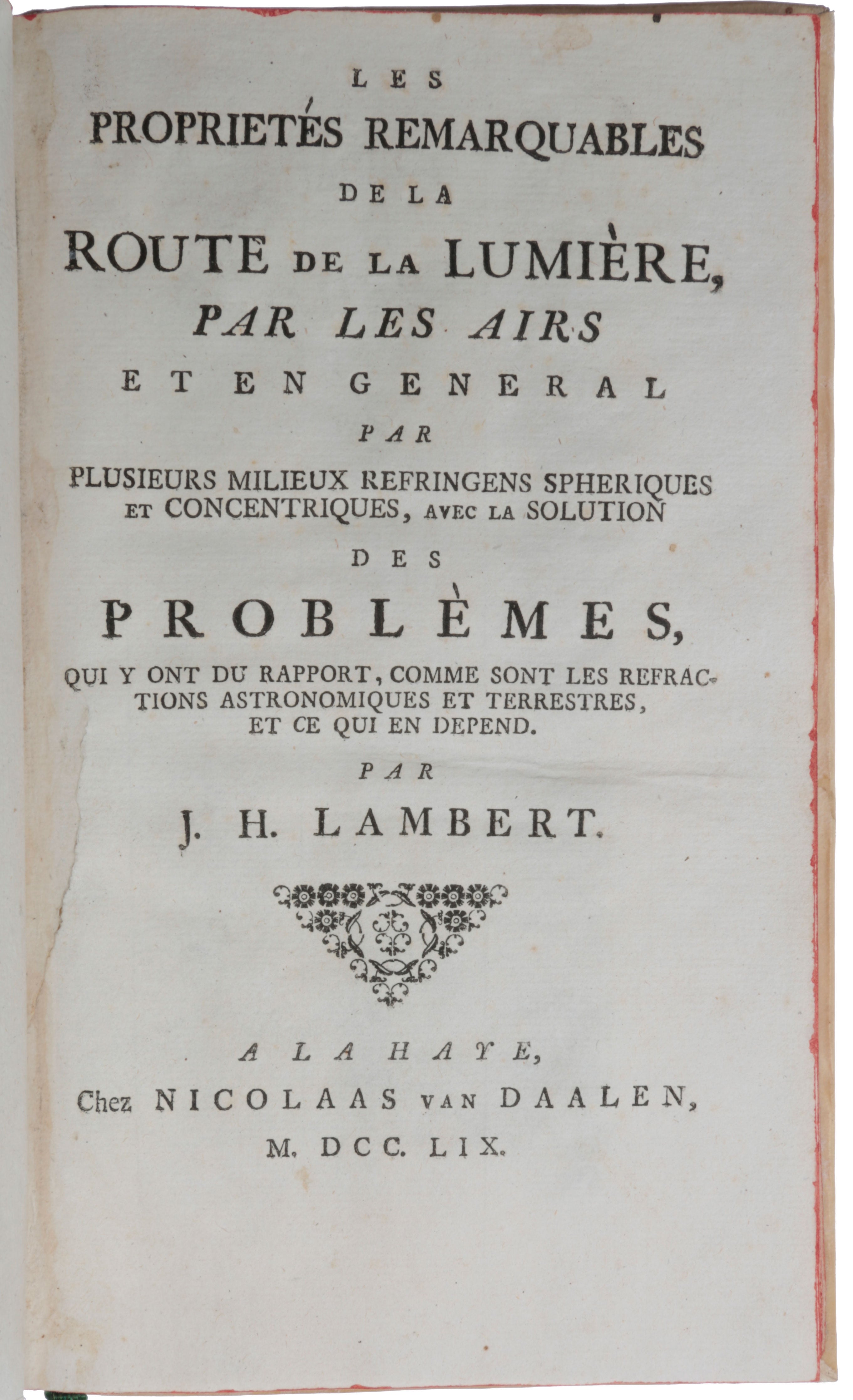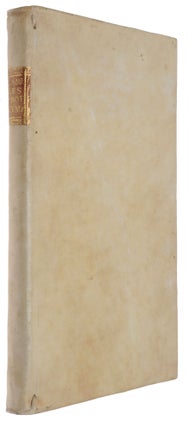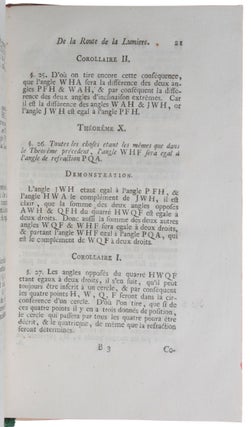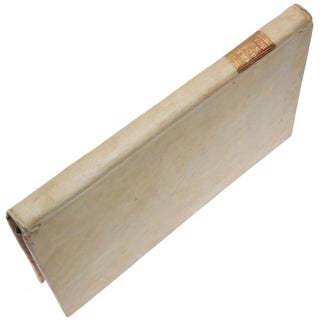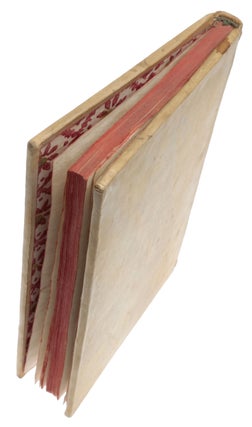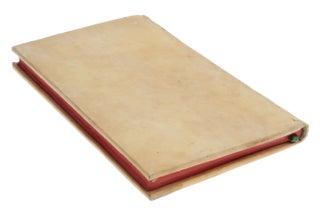Les propriétés remarquables de la route de la lumière par les airs et en général par plusieurs milieux réfringens sphériques et concentriques, avec la solution des problèmes qui y ont rapport...
The Hague: Nicolaas van Daalen, 1759. First edition, second issue, extremely rare, of Lambert’s first published book, dealing with the path of light rays in air and other media. Lambert began working on aspects of refraction through the atmosphere in 1752, and from 1754 this work was carried out in parallel with his great work on photometry. Lambert began the manuscript for the Propriétés remarquables in January 1758, and by March 1758 he had finished it and submitted it for publication in The Hague. The book is divided into three parts: ‘Les propriétés générales de la route, qui la lumière prend, en passant par des milieux réfringens, sphériques et concentriques’; ‘Des réfractions astronomiques, de la manière de les déterminer par approximation aussi exactement que l’on voudra, et de leur rapport à divers autres problèmes’; ‘Des réfractions circulaires, de leur usage pour la détermination des réfractions terrestres: et de divers autres problèmes dépendant des réfractions tant astronomiques que terrestres’. It is remarkable that during the entire period 1756-58 Lambert was traveling through northern Europe. He had with him a small library but also bought and read several additional optics books on his journey. In the Propriétés remarquables Lambert mentions that he is working on another work in optics and promises to publish it soon – this would eventually be his Photometria. In his preface to that work, Lambert notes that he has made good on his promise. The Propriétés remarquables was an immediate success, and was translated into German by Tempelhoff and published twice in Berlin in 1772 and 1773. This work, and his Photometria, undoubtedly influenced Euler, Gauss, Hamilton, Jacobi, Arago, and perhaps Fresnel and Cauchy. ABPC/RBH list only one other copy since the Andrade sale in 1965." to "RBH lists only one copy of the first issue (1758) and one other copy of the second issue since the Andrade sale in 1965. The history of the study of astronomical refraction to which the present work is devoted goes back to Tycho Brahe and Johannes Kepler. The first physical theories developed in this field are due to Thomas Simpson, who calculated the refraction in 1743 as a function of air density, and Edmund Halley, who calculated it as a function of pressure. In the foreword Lambert mentions Bouguer’s Essai d’Optique (1729), Smith’s A Complete System of Optics (1738), and Euler’s ‘Réflexion sur les différents degrés du soleil et dès autres corps célestes’ (Mémoires de l'Académie des Sciences de Berlin 1752, pp. 280-302). However, Lambert’s approach to the problem of atmospheric refraction differs entirely from Euler’s. Euler attacked the physical problem in its entirety and also studied the hypotheses on the relation between temperature, pressure and density. Lambert, on the other hand, refrains from making such hypotheses and his merit is precisely to show how far we can go into this problem by using considerations independent of any physical hypothesis, because, at the time when he wrote, scientists were far from a good understanding of thermodynamics. Lambert undertook this work for practical applications – this was also the motivation for much of the work of many other contemporary scientists such as Euler: Lambert’s theory of the refraction of light through the atmosphere served to correct astronomical observations and geodetic measurements. The organization of Lambert’s book is determined by this requirement. Another characteristic feature of the work is the presentation of the theory in deductive form more geometrico in the Euclidean style: hypothesis, theorem, proof, corollary. Lambert limits himself to using only two ‘experiments’ as a starting point for his geometric reasoning. He refuses, moreover, to take into account physical relations between refraction and density. Lambert managed to avoid having to make use of such relations by assimilating the light ray to an arc of a circle whose radius he determines from observations. Although Lambert did not advance physical optics in this book, he did so two years later in the Photometria. The behaviour of light rays at the boundary between two media of different refractive indices had been understood since Snel and Descartes, and is described by ‘Snel’s law’. In the atmosphere the refractive index of the air varies due to the varying temperature and pressure but this variation is continuous. Lambert’s aim in the present work is to determine, using geometrical arguments, the path of light rays in a medium with continously varying refractive index. He treats the case of a system of concentric spherical layers. The principal result is Theorem 7: ‘for any pair of points along the ray, the ratio between the normals which go from the centre of the spheres to the tangent of the ray is constant whatever the angle of incidence’. This result is known nowadays under the name of ‘Bouguer’s law’ – we do not know if Lambert took it from Bougeur’s 1729 work or discovered it independently. Lambert deduces from it Theorem 16, in which he establishes that the locus of the centres of curvature of the trajectory of the ray lie on a straight line orthogonal to the line which passes through the centre of the spheres and the point where the ray enters the nonuniform medium (where the angle of incidence is defined). This theorem is, in the context of the optics of Hamilton-Jacobi, analogous to the conservation of angular momentum. It is used repeatedly in the sequel. In particular, Lambert shows that it can be applied to the atmosphere if one disregards the variation of the separation between the two media at the price of a minor error that decreases with the angle of incidence. “But it is the applications that constitute the object of the second and third parts of the work. They are presented in the form of problems and to solve them Lambert once again resorts to the geometry of the circle. The starting point of his reasoning is the assimilation of the curve of the light rays to a circular arc, which is a hypothesis permitted in the particular case of atmospheric refraction. The discussion is especially detailed, and provides us with a vivid illustration of the scientific activities of the eighteenth century. “The book testifies to the spirit of its time, using geometric methods to the very end, with the aim of reducing or eliminating the hypotheses. It would be false to say that the Propriétés remarquables lacks originality, but all things condidered, it is the pursuit of classic ideas through to their very last consequnces that characterizes the book” (Speiser & Williams, p. 247). Speiser & Williams (eds.), Discovering the Principles of Mechanics 1600-1800, 2008.
8vo (199 x 118 mm), pp. 116 with two folding engraved plates (title strengthened in gutter on verso resulting in a tear in the inner margin, nowehere near printed area). Contemporary vellum, red edges.
Item #5808
Price: $6,500.00

